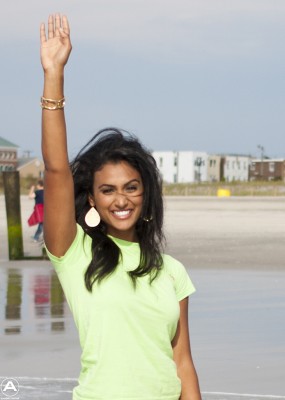The Beauty World Needs a Splash of Color
September 24, 2013
Last week, after flipping through my old issues of Teen Vogue, Allure and Vanity Fair, I came to an eerie revelation: out of eleven magazines with hundreds of ads, I found only seven colored models.

It seems racism plagues every faction of the beauty world. Tyra Banks, Iman and Naomi Campbell are known as the poster children for women of color in the fashion and beauty world but the fact that I can only name three colored models shows that, even in today’s world, the fashion and beauty industry is still racist.
According to a recent Jezebel post, at the Fall-Winter 2013 Mercedes-Benz Fashion Week in New York, six percent of models were black, 9.1 percent Asian, 2 percent Latina, and .3 percent other. A whopping 82.7 percent of models in these shows were white. If these numbers for minorities seem shockingly low, that’s because they are—there are less colored models in the fashion world now than there were in the 1970s. The difference this year is that women are speaking up about this problem. Models Naomi Campbell and Iman and former agent, Bethann Hardison, banded together to form The Diversity Coalition. Their mission is to reveal designers who exclude non-white names in their model casting. Among the many offending brands were Donna Karan, Oscar de la Renta, Alexander Wang, and Marc by Marc Jacobs.
Although the work of The Diversity Coalition is a good start, it didn’t stop the next wave of racism from hitting the beauty world last week when Indian-American Nina Davuluri won the Miss USA pageant. As CNN journalist, Leslie Benz, put it: “No sooner had the tiara been placed atop her head than a barrage of racist tweets flooded the Internet.” Twitter exploded with racist remarks which spurred from jokes about her having ties to al-Qaeda to stabs at her faith. Among the tweeters was Todd Starnes, host of Fox News & Commentary, who tweeted, “Miss Kansas lost because she actually represented American values.”
I was shocked by these tweets, as Davuluri was born and raised as an American. In a country that prides itself on its immense diversity and cultural acceptance, I find it astonishing that the “Ideal American Beauty” image is still predominantly white-washed. The fashion and beauty industries greatly lack an acceptance of diversity yet, as of right now, 49.9 percent of all American children under age five are not white, according to the Census Bureau. It is estimated that a majority-minority shift will take place within the next 30 years, but half the girls across the country are still fed images from the media telling them the ideal beauty is white.
As an avid supporter of diversity and lover of fashion, I need these two to become one. We must stand up against this skewed sense of beauty. Put down those beauty ads and stop following certain designers on Instagram. In a nation that has made so much progress—from equal rights to a first black president—the beauty myth has remained in a time freeze and will continue to stay that way unless we make our voices heard.









Fanny • Oct 4, 2013 at 11:36 am
@Maria Romero-McCue Wow! What a great article
Any relation to the author, by any chance?!
Full disclosure, please.
vrinda • Oct 4, 2013 at 5:13 am
You are SO right. I read scores of racist tweets and I felt disgusted- not because I am an Indian, but because the girl is being discriminated purely because of her country of origin. She won Miss America because she’s talented, she’s beautiful, she knows what she’s talking about, and she deserves it. Plus, she IS an American!
I completely agree with you. The beauty myth needs to be unfrozen, and it needs to be done NOW.
Chrissy Pacheco • Sep 25, 2013 at 12:24 pm
Excellent article! Good job Taylor.
Recently I was reading about the fact that, according to the census, white Americans are becoming the minority. I think it’s great that Americans of all races, mixed or otherwise, will soon “be” the norm in our diverse world. The host of Fox News, Todd Starnes, needs a course in culturally competent journalism. It’s part of being a professional. Miss Kansas’ loss had nothing to do with her representation of American values.
Tate • Sep 25, 2013 at 10:06 am
So incredibly proud of you, taylor. You are absolutely correct!
Xxxx
Maria Romero-McCue • Sep 24, 2013 at 9:16 pm
Wow! What a great article and definitely and eye opener. I hope that when people see the numbers (and faces) on these pages, it becomes real to them that in so any ways, we are still a world divided. Color should only represent crayons in a box, not people on the streets. Thank you for sharing such great insight! I’m so proud of you for taking the leap both on the paper and in life! I love you! ~Mom